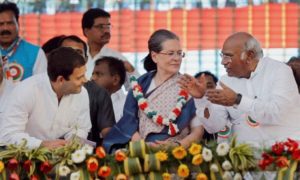Modi Government has set target of breaking into the top 50.
Rank improvement can be attached to lesser regulation for registering and starting businesses
New Delhi: India broke into the top 100 in the World Bank’s Ease of Doing Business rankings, notching up the biggest improvement among all countries on the back of big gains on a number of measures.
The rise to the 100th position from 130 last year made India one of the top 10 ‘best-improved’ countries and rounded off a day of good news on the economic front for the government.
The Narendra Modi government had, on coming to power in 2014, set itself a target of breaking into the top 50 from 142 that year.
The rank improvement can be attached to lesser regulation for registering and starting businesses now, and availability of online payment modes, which may not necessarily translate into better performance of those businesses.
The World Bank’s ‘Doing Business 2018 — Reforming to Create Jobs’ report ranks 190 countries on the basis of a combined score on 10 parameters. India notched up improvement in rank in six of these measures. The report captures reforms in the period between June 2, 2016 and June 1, 2017, and factors in two cities from India, namely Delhi and Mumbai.
However, according to labour bureau statistics, job creation or job growth for 2015 and 2016 (April-December) stood at 1.55 lakh and 2.31 lakh in numbers respectively.
These numbers are far lower than the promise made by Narendra Modi during the election campaign and considerably lower than the high of over 10 lakh jobs created in 2009 under the Manmohan Singh government.
Even as the government targets the social sciences, it is encouraging the growth of engineering colleges, despite the fact that engineering jobs (particularly in IT) are shrinking in India, with huge layoffs in the sectors.
In the last year’s survey of the labour bureau, it found that in most of the eight biggest employment generation sectors – Textiles, leather, metals, automobiles, gems and jewellery, transport, information technology and the handloom sectors – jobs were shrinking.
About 19,000 people lost jobs in the gems and jewellery sector in 2015 while around 11,000 workers went out of employment in handloom/powerloom sector. Leather and automobiles sectors saw employment declining by 8,000 each while 4,000 people lost jobs in the transport sector.
IT and BPOs created highest number of jobs providing employment to 76,000 people in 2015. Textile and metals provided 72,000 and 37,000 jobs respectively.
A general trend of shrinking export in the last three years has led to loss of hundreds of jobs.












